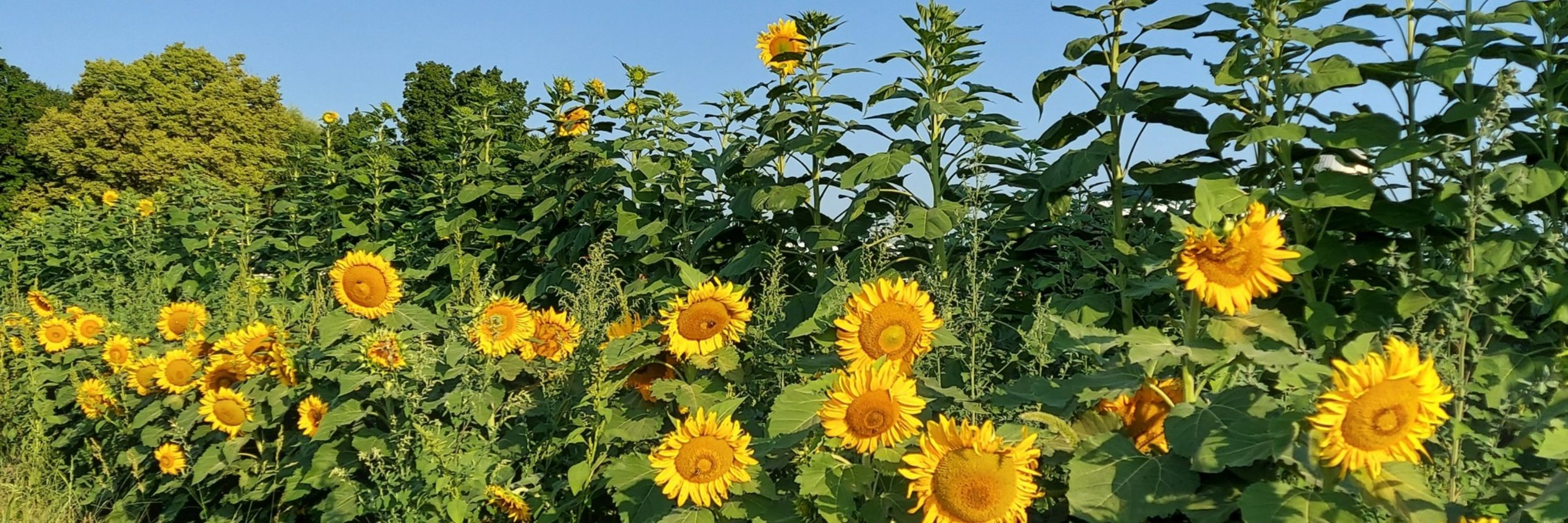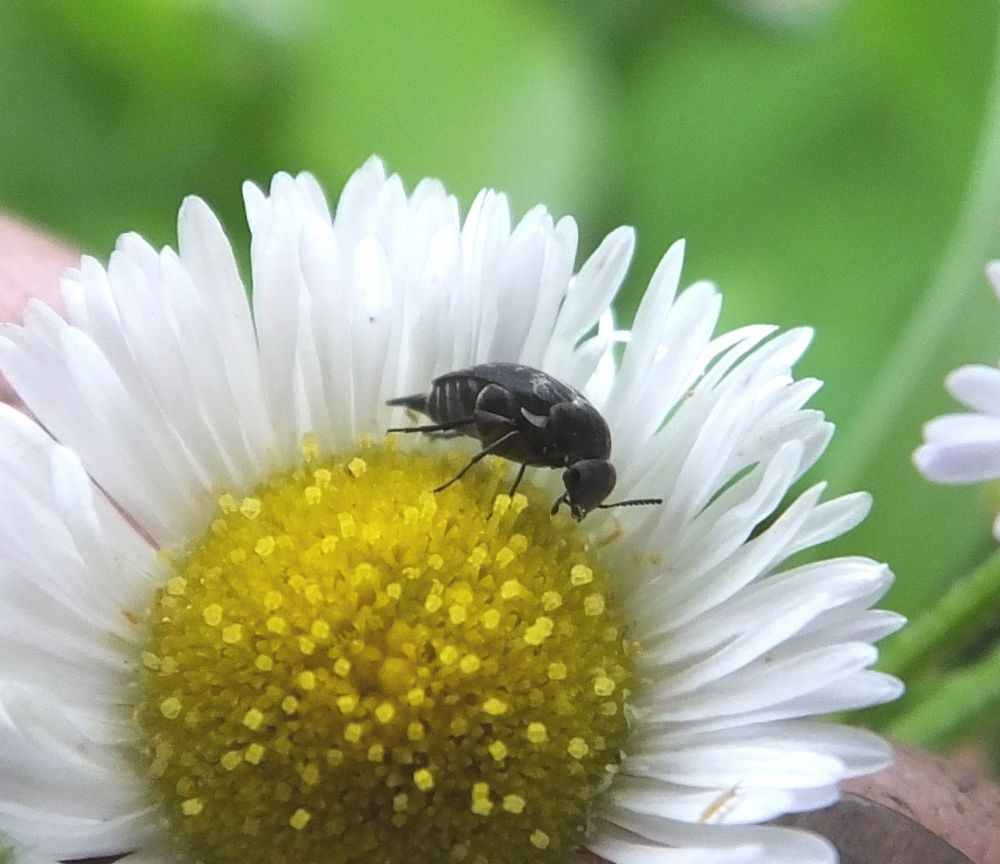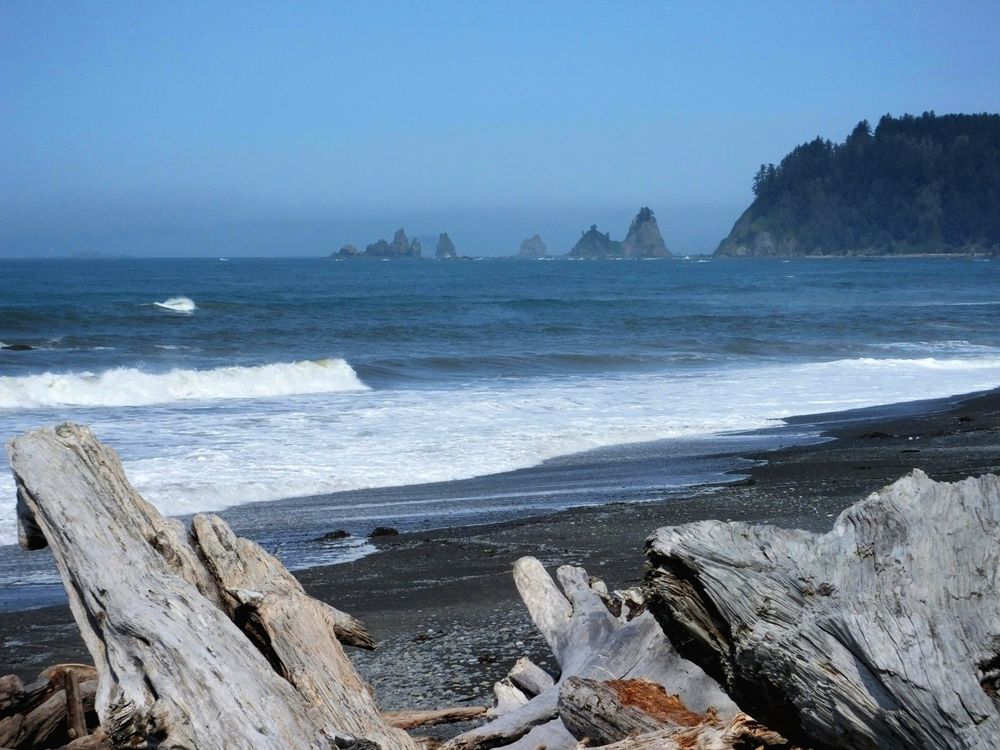
Jeremy Sell
@jeremysell.bsky.social
Ecology and nature nerd. Plant and insect lover. Professional horticulturist. Michigander. Adventurer. Collector of experiences, not things. BA in Biology and Geology. Dated photos here are © my own.
The Au Sable River from the Westgate Overlook. Huron National Forest, Michigan, 10 Oct 2014.

November 10, 2025 at 10:17 PM
The Au Sable River from the Westgate Overlook. Huron National Forest, Michigan, 10 Oct 2014.
Cuckoo wasps (Hymenoptera: Chrysididae) are named for the habit most species have for laying eggs in the nests of other species. Their kleptoparasitic larvae feed on the provisions left for the host insect's young. Clayton Michigan, 25 Sep 2013.

November 10, 2025 at 9:11 PM
Cuckoo wasps (Hymenoptera: Chrysididae) are named for the habit most species have for laying eggs in the nests of other species. Their kleptoparasitic larvae feed on the provisions left for the host insect's young. Clayton Michigan, 25 Sep 2013.
Waterwillow or swamp loosestrife (Lythraceae: Decodon verticillatus) inhabits wetlands throughout eastern North America. The stems of this shrubby perennial reach up to eight feet in length and often arch down to the ground. Indiana Dunes National Lakeshore, Indiana, 11 Aug 2012.

November 10, 2025 at 5:56 PM
Waterwillow or swamp loosestrife (Lythraceae: Decodon verticillatus) inhabits wetlands throughout eastern North America. The stems of this shrubby perennial reach up to eight feet in length and often arch down to the ground. Indiana Dunes National Lakeshore, Indiana, 11 Aug 2012.
Eastern zebra-tailed lizards (Squamata: Phrynosomatidae: Callisaurus draconoides ventralis) are relatively common in the hot Sonoran Desert. They prey on insects and other small arthropods, as well as smaller lizards. Organ Pipe Cactus National Monument, Arizona, 08 Apr 2018.

November 10, 2025 at 3:09 PM
Eastern zebra-tailed lizards (Squamata: Phrynosomatidae: Callisaurus draconoides ventralis) are relatively common in the hot Sonoran Desert. They prey on insects and other small arthropods, as well as smaller lizards. Organ Pipe Cactus National Monument, Arizona, 08 Apr 2018.
November 10 is Edmund Fitzgerald Day, a sort of minor holiday in Michigan.

"The Wreck of the Edmund Fitzgerald" - Gordon Lightfoot (HD w/ Lyrics)
YouTube video by Zeezy
youtu.be
November 10, 2025 at 2:22 PM
November 10 is Edmund Fitzgerald Day, a sort of minor holiday in Michigan.
Appalachian ridge and valley province west of Hancock Maryland, 02 Nov 2010.

November 10, 2025 at 1:41 PM
Appalachian ridge and valley province west of Hancock Maryland, 02 Nov 2010.
Lace bugs (Hemiptera: Tingidae) are tiny, delicate insects that feed on plant juices using their piercing-sucking mouthparts. Most feed on trees and shrubs, and in large numbers these pests can easily siphon enough fluid to cause wilting and defoliation. Clayton Michigan, 21 Jun 2013.

November 9, 2025 at 8:00 PM
Lace bugs (Hemiptera: Tingidae) are tiny, delicate insects that feed on plant juices using their piercing-sucking mouthparts. Most feed on trees and shrubs, and in large numbers these pests can easily siphon enough fluid to cause wilting and defoliation. Clayton Michigan, 21 Jun 2013.
The first snowfall of the season at our local Yuletide Festival. Blissfield Michigan, 09 Nov 2025.

November 9, 2025 at 3:46 PM
The first snowfall of the season at our local Yuletide Festival. Blissfield Michigan, 09 Nov 2025.
North Bubble, South Bubble, and Jordan Pond one autumn. Acadia National Park, Maine, 27 Oct 2015. #NationalParks

November 8, 2025 at 4:35 PM
North Bubble, South Bubble, and Jordan Pond one autumn. Acadia National Park, Maine, 27 Oct 2015. #NationalParks
Large crane flies (Diptera: Tipulidae) look big and intimidating, but these insects don't bite. Adults of many species feed on flowers, but some don't feed at all. They live just long enough to mate and lay eggs. Adrian Michigan, 17 Aug 2024.

November 8, 2025 at 3:07 PM
Large crane flies (Diptera: Tipulidae) look big and intimidating, but these insects don't bite. Adults of many species feed on flowers, but some don't feed at all. They live just long enough to mate and lay eggs. Adrian Michigan, 17 Aug 2024.
Snowshoe hares (Lagomorpha: Leporidae: Lepus americanus) can be found across most of northern North America. They have a white coat in winter but a brown coat in summer. They eat a variety of plant material, and are preyed upon by a host of predators. Voyageurs National Park, Minnesota, 17 Jun 2020.

November 8, 2025 at 2:08 PM
Snowshoe hares (Lagomorpha: Leporidae: Lepus americanus) can be found across most of northern North America. They have a white coat in winter but a brown coat in summer. They eat a variety of plant material, and are preyed upon by a host of predators. Voyageurs National Park, Minnesota, 17 Jun 2020.
Wild horses grazing on a foggy morning. Assateague Island National Seashore, Maryland, 14 May 2014.

November 8, 2025 at 11:05 AM
Wild horses grazing on a foggy morning. Assateague Island National Seashore, Maryland, 14 May 2014.
Masked bees (Hymenoptera: Colletidae: Hylaeus spp.) spend a lot of time collecting pollen for their young, like this one on a sulphur cinquefoil (Rosaceae: Potentilla recta). They lack the transport hairs most bees have and carry it in a secondary "honey stomach." Clayton Michigan, 27 Jun 2014.


November 7, 2025 at 7:10 PM
Masked bees (Hymenoptera: Colletidae: Hylaeus spp.) spend a lot of time collecting pollen for their young, like this one on a sulphur cinquefoil (Rosaceae: Potentilla recta). They lack the transport hairs most bees have and carry it in a secondary "honey stomach." Clayton Michigan, 27 Jun 2014.
Scarites ground beetles (Coleoptera: Carabidae: Scarites spp.) are found throughout much of the world. Like most ground beetles they are nocturnal and both adults and larvae are predators of other insects. Clayton Michigan, 06 May 2016.

November 7, 2025 at 6:00 PM
Scarites ground beetles (Coleoptera: Carabidae: Scarites spp.) are found throughout much of the world. Like most ground beetles they are nocturnal and both adults and larvae are predators of other insects. Clayton Michigan, 06 May 2016.
Early morning mist in the Kawuneeche Valley. Rocky Mountain National Park, Colorado, 06 Aug 2013. #NationalParks

November 7, 2025 at 3:38 PM
Early morning mist in the Kawuneeche Valley. Rocky Mountain National Park, Colorado, 06 Aug 2013. #NationalParks
Here comes the sun. Blissfield Michigan, 31 Oct 2025.

November 6, 2025 at 1:24 PM
Here comes the sun. Blissfield Michigan, 31 Oct 2025.
There goes the sun. Blissfield Michigan, 05 Nov 2025.

November 6, 2025 at 12:37 AM
There goes the sun. Blissfield Michigan, 05 Nov 2025.
Treehoppers (Hemiptera: Membracidae) are often easy to recognize thanks to their large pronota. In this family the upper surface of the first thoracic segment is expanded, covering much of the body. In many species the pronota can take on a variety of ornate shapes. Clayton Michigan, 14 Jul 2010.

August 27, 2025 at 6:38 PM
Treehoppers (Hemiptera: Membracidae) are often easy to recognize thanks to their large pronota. In this family the upper surface of the first thoracic segment is expanded, covering much of the body. In many species the pronota can take on a variety of ornate shapes. Clayton Michigan, 14 Jul 2010.
With their long legs and humpbacked, wedge-shaped bodies, tumbling flower beetles (Coleoptera: Mordellidae) look somewhat like large fleas. These natural acrobats use their powerful hind legs to escape predators. When threatened they jump and roll to safety. Palmyra Michigan, 03 Jul 2013.

August 27, 2025 at 3:45 PM
With their long legs and humpbacked, wedge-shaped bodies, tumbling flower beetles (Coleoptera: Mordellidae) look somewhat like large fleas. These natural acrobats use their powerful hind legs to escape predators. When threatened they jump and roll to safety. Palmyra Michigan, 03 Jul 2013.
Driftwood, seastacks, and waves along the Pacific coast. Olympic National Park, Washington, 19 Apr 2015. #NationalParks

August 26, 2025 at 4:00 PM
Driftwood, seastacks, and waves along the Pacific coast. Olympic National Park, Washington, 19 Apr 2015. #NationalParks
Harlequin blueflag (Iridaceae: Iris versicolor) is a large showy wildflower native to wetlands in northeastern North America. Although beautiful, the leaves and roots are poisonous. Voyageurs National Park, Minnesota, 18 Jun 2020.

August 26, 2025 at 2:29 PM
Harlequin blueflag (Iridaceae: Iris versicolor) is a large showy wildflower native to wetlands in northeastern North America. Although beautiful, the leaves and roots are poisonous. Voyageurs National Park, Minnesota, 18 Jun 2020.
The common branded skipper (Lepidoptera: Hesperiidae: Hesperia comma) is widespread in Eurasia and has one subspecies in North America. In Europe it's called the silver-spotted skipper, but in North America that name is used for Epargyreus clarus, a different species. Torla Spain, 14 Sep 2015.

August 26, 2025 at 12:21 PM
The common branded skipper (Lepidoptera: Hesperiidae: Hesperia comma) is widespread in Eurasia and has one subspecies in North America. In Europe it's called the silver-spotted skipper, but in North America that name is used for Epargyreus clarus, a different species. Torla Spain, 14 Sep 2015.
Black-tailed jackrabbits (Lagomorpha: Leporidae: Lepus californicus) are common in scrublands in the western US and Mexico. These large hares feed on shrubs, grasses, and other short plants, and are often prey for raptors and large carnivores. Joshua Tree National Park, California, 09 Apr 2018.


August 26, 2025 at 11:15 AM
Black-tailed jackrabbits (Lagomorpha: Leporidae: Lepus californicus) are common in scrublands in the western US and Mexico. These large hares feed on shrubs, grasses, and other short plants, and are often prey for raptors and large carnivores. Joshua Tree National Park, California, 09 Apr 2018.
A mining bee (Hymenoptera: Andrenidae: Andrena miserabilis) feeding on the pollen of a Virginia spring beauty (Montiaceae: Claytonia virginica). Spring ephemeral wildflowers are an important source of food for a variety of insects that appear early in the year. Blissfield Michigan, 25 Apr 2011.

August 25, 2025 at 4:22 PM
A mining bee (Hymenoptera: Andrenidae: Andrena miserabilis) feeding on the pollen of a Virginia spring beauty (Montiaceae: Claytonia virginica). Spring ephemeral wildflowers are an important source of food for a variety of insects that appear early in the year. Blissfield Michigan, 25 Apr 2011.
Texas madrone (Ericaceae: Arbutus xalapensis) is a native tree of Texas, New Mexico, and Mexico. Their broadleaf evergreen foliage is contrasted by their reddish bark and makes them stand out in the Chihuahuan Desert. Guadalupe Mountains National Park, Texas, 12 Feb 2014.

August 25, 2025 at 2:02 PM
Texas madrone (Ericaceae: Arbutus xalapensis) is a native tree of Texas, New Mexico, and Mexico. Their broadleaf evergreen foliage is contrasted by their reddish bark and makes them stand out in the Chihuahuan Desert. Guadalupe Mountains National Park, Texas, 12 Feb 2014.

